MA Photojournalism and Documentary graduating class of 2019 *London College of Communication, University of London*
Don't wanna be here? Send us removal request.
Photo
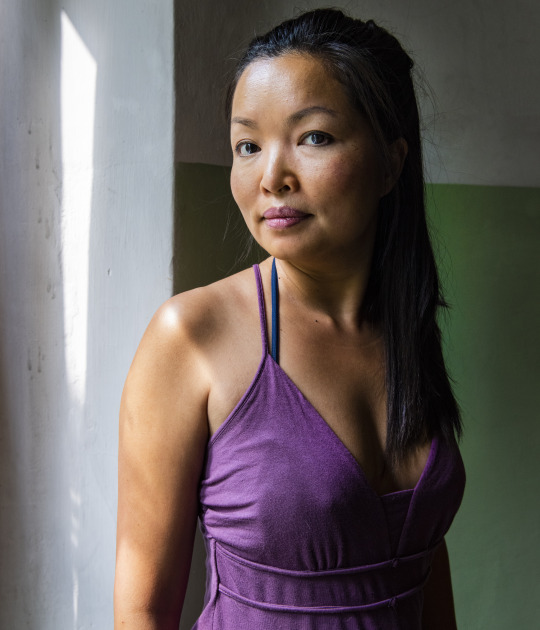
Ba Lan: The Story of the Vietnamese Diaspora in Poland , Zula Rabikowska
“I spent my whole adult life here, but the colour of my skin and the shape of my eyes mean that the society will always see me as foreign.” Ngo Van Tuong, August 2019.
Ba Lan means “Poland” in Vietnamese and Ba Lan focuses on the Vietnamese diaspora in Poland. The Vietnamese community is the biggest non-European migrant community living in Poland, with an estimated population of 50-80,000.
This community first started to form due to student exchanges between Poland in Vietnam in the 1950s and 1960s and to this day Poland is an attractive destination for new waves of Vietnamese migrants.
Using photography and archival imagery, I explore the connection between Poland and Vietnam, two culturally disparate countries located on the opposite sides of the world. I focus on the intersections of Polish and Vietnamese culture and examine the relationships between national identity, belonging and ethinicty.
Ba Lan probes how Poland’s former communist past has influenced the shape of this community, and how its members reconcile their identity in a predominantly mono-ethnic country. www.suzyra.com @zula.ra
0 notes
Photo

Silence is Golden - Vera Zurbrügg
Silence Is Golden is a multimedia installation which engages with the different aspects of state secrecy and concealment of information in the context of the gold trades between the Swiss National Bank and the Third Reich and its direct effect on the people.
Switzerland was the primary hub for the Nazis to exchange gold for hard currencies to buy goods for their warfare. Some of this gold had a specific provenance: it was composed of the remelted property of prisoners of concentration camps. These gold bars are known as victim gold. Documents show that in 1943 the Swiss National Bank had the suspicion that the German gold came from Nazi-occupied territories and was being confiscated by the Reichsbank in gross violation of international law. Nevertheless, the Swiss National Bank kept accepting gold until 1945.
After the war, these victim gold bars were then presumably used for the minting of an iconic Swiss gold coin, the ‘Vreneli’. This coin is mainly given as a gift for special occasions such as baptisms or significant birthdays. Through withholding information, buyers of such gold coins were unknowingly complicit in the morally questionable deals between the Swiss National Bank and the Nazis. www.verazurbruegg.com @verazurbruegg
0 notes
Photo

The Last Hussar - Tobias Wilkinson
Seventy years after British troops liberated Belsen concentration camp and accepted the German surrender on Luneberg Heath in 1945, Britain’s last tank regiment in Germany, The Queen’s Royal Hussars returned to the UK in September 2019. British artist, Tobias Wilkinson undertook a conventional photojournalism project to document much of the last year of the regiment’s life in Germany. His work shows the life of British tank soldiers in their barracks in Sennelager and during their final set of manoeuvres on the live firing ranges in Bergen Hohne in Lower Saxony, before their return to the UK.
His work contrasts with the well documented conflicts in Iraq and Afghanistan and tells the story of an often forgotten part of Britain’s military history in Europe and its last days on the Continent. The full body of work will part of a major museum exhibition in London in 2020 and coincide with its publication as a book by Unicorn Publishing.
www.tobiaswilkinson.com
@tobiaswilkinson
0 notes
Photo

Fabulous Ones - Tim Boddy
Fabulous Ones scrutinises LGBTQ+ identity politics while mapping queer spaces in London, and considers what is a queer space, how we define them, and who is permitted to define them. The rising tide of racism and homophobia in society further informs the project, which also addresses the prejudices found within the LGBTQ+ community itself.
London saw a 58% reduction in queer spaces between 2006 and 2016. While this statistic is important and has attracted headlines, the reality is more nuanced. A plethora of vibrant collectives have emerged that better represent all members of the queer community and the diversity that exists within it, including people who had traditionally been less well served. Social events for, and run by, queer women, queer people of colour, non-binary, intersex, andtrans people have become far more prominent. My multi-layered work features those involved in running these collectives and offers an insight into the joyful and necessary tactics being used to queer social spaces and nightlife in London.
There are significant gaps in queer cultural history, especially for those who are not white, cisgendered gay men. By creating a living archive, I attempt to resist future erasure.
An archival installation piece for the exhibition interprets this literally, incorporating ephemera donated by participants and audio recordings featuring conversations with and between participants. Steered by members of the queer community, the work can be used to ask questions in relation to whose queer bodies are safe, valued, and celebrated.
www.timboddy.com
@timjboddy
0 notes
Photo

My Geographic Self - Sheng Zhang
This is a story about me and the atlas. I started collecting maps at a very young age, and I was fascinated by the undulating curves on the map and the beautiful color combinations.
Reading a map was my entertainment in an age when the internet was less prevalent. When reading the atlas, I am somewhere extremely remote, that you arrived at by sea but I know where other people are2I am like the spider sitting in the middle of the web, pulling it all in.
I have gained a sense of safety that I have never had before. When looking at the world on paper, I am just like being wrapped up in this world and no longer afraid to get lost. I can know very well what is outside my area, these lines and colors are enough to lead me to the 510,067,860 square kilometers.
When I was wrapped in a silk, a sense of safety came through, I started to realize that my blood vessels were connected to the river and the mountains, I became atlas myself, besides, converting the undulating texture on the silk into a 3D model formed some strange planets, Let me rotate! Just like the earth, and turn into five geographic maps, rotating! @cameradoggy
0 notes
Photo

The Skin We Live In - Sara Lopes
With the rise of social media, we are more aware of how we look. Even before this, the idea of perfection could change how we lived our lives since appearance affects how others regard us. Being the primary organ of communication, skin perfection was always the goal, visible even in antiquity paintings, where men coloured their skin with a variety of paints and dyes in order to enhance their beauty.
As well as being the human body’s biggest organ, the skin is also the connection point between the person and the world, allowing us to feel and be felt. But what does it mean to have a skin condition in this paradigm? Do skin conditions affect the way we see ourselves?
The Skin We Live in seeks to explore the relationship between mind and skin, more precisely with conditions like eczema, psoriasis, vitiligo and acne, among others. By utilising the concept of phototherapy, the aim is to empower the collaborators to feel more comfortable in their skin. The process encompasses a conversation between the photographer and each participant, later developed into conceptual studio photography.
@saralopesphoto
0 notes
Photo
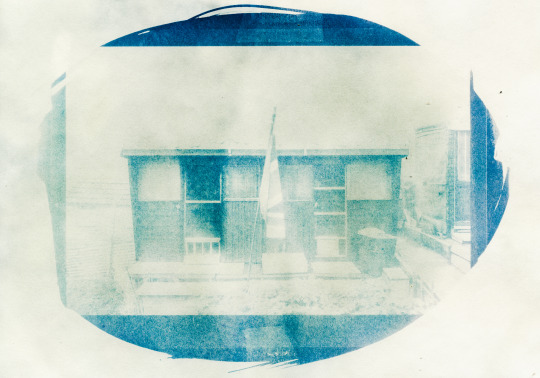
North Sea Developments - Rhys Baker
This project conducts a topographic survey of the small, North Yorkshire coastal village of Skinningrove.
Utilising the inherent elemental and vital factors found in the fabric of the village - iron, salt, water, alum etc. The project focuses on visual methods of representing the landscape but also explores the idea of a self- representing landscape.
My investigation starts from the premise that vital forces can be accessed as a means for collaboration, recording, scrutinising, mapping and narrating the village, its inhabitants and the immediate surroundings. Can the images become new ‘Maps’ that ‘attempt to record and represent the grain and patina of... everything you might ever want to say about a place?’
www.rhysbaker.com.com
@upshot.photography
0 notes
Photo
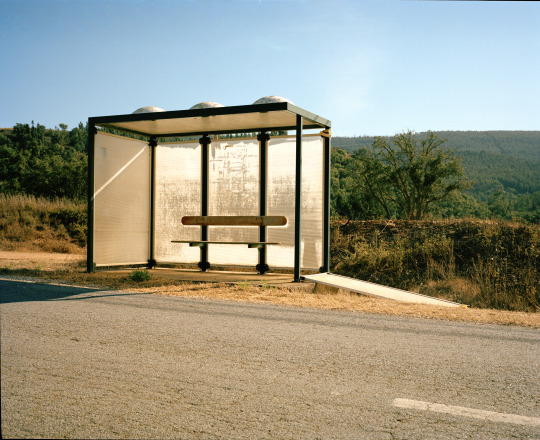
Round the Corner - Nuno Guerreiro de Sousa
Round the Corner or É já ali is a commonly used expression in Alentejo, a region in southern Portugal. The vast mountainous landscape and the sparse distribution of inhabitants creates a very specific scale of both distance and time.
Often, when asked for directions, people will say it’s ‘round the corner’ even though it could be more than an hour’s drive away.
Odemira, part of Alentejo, is the largest municipality in Portugal and also has one of its lowest population densities towards the interior. Its local touristic slogan - “Odemira - the best beaches in Portugal” - demonstrates how local governmental agents have been overlooking and neglecting the interior of the municipality. The long distances, difficult access, growing desertification of the area, and ageing of the population have all led to a generalised feeling of segregation and abandonment.
The enduring isolation, desertification and lack of dynamics has contributed to Odemira having the highest suicide rate per capita in Europe, one of the highest in the world, specially amongst the elderly. Studies suggest that low religiosity in the area also has a decisive impact on these statistics. Round the Corner aims to portray the isolation that the landscape imposes on people, while collecting personal stories on life in rural Alentejo and exploring the prevalent suicide culture.
www.nunogsousa.com
@nunoguerreirodesousa
0 notes
Photo

Closer to the Earth - Nic Madge
After detailed research on American landscape photographers and painters, I spent two months hiking through wild, Western parts of the USA and British Columbia, exploring and questioning the concept of “wilderness” and taking photographs which document the beauty and the fragility of our earth. I tried to see the earth as the earth might see itself and to imagine I could feel its inner emotions.
As I walked through Colorado, Utah, Wyoming, Montana, British Columbia and Alaska, and looked at the earth beneath my feet, I increasingly felt the dangers of global heating and the climate crisis which threaten us humans and the other species with which we share the earth.
I have assembled my photographs, close-up images looking down at the earth, into different formats – a visual presentation with audio and text, an Instagram feed and a book Closer to the Earth – to highlight this crisis. Some of the images are stuck to the floor where they will be trampled and spoilt by visitors, – symbolising the way in which we humans trample over and spoil the earth.
www.nicmadge.co.uk
@nicmadge
0 notes
Photo
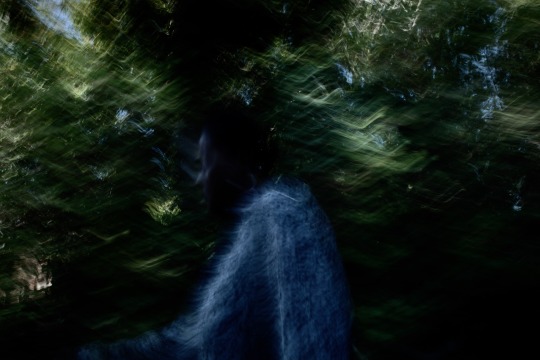
This Green and Hostile Land - Nancy Hurman
The UK’s immigration detention system is one of the largest in Europe, it has no time limit on how long a person can be held. Approximately half of those held in the detention estate are later released into the community. The system, whilst relatively new in its current form, has grown alongside increasingly stringent immigration policies and continues now under rising anti- immigration sentiment.
Indeterminacy is the distinguishing characteristic of immigration detention; the bureaucratic and physical limbo in which detainees find themselves, not knowing how long they may be held, when or if they will be released or deported.
The physical sites of detention, remote and removed, keeping both the people and system invisible. And the place of this system in the British psyche, where it is routinely condemned yet it persists.
Working with photography, video and interviews, I explore these indeterminacies as they exist throughout immigration detention. Examining the experiences of former detainees, the sites of detention and the bureaucratic violence that created the system and perpetuates it now. I seek to question the necessity of detention, as a policy of migration, as well as the complicity of British people in the arbitrary detention of thousands of people every year.
www.nancyhurman.com
@nmhurman
0 notes
Photo

Extimacy - Mark O’Brien
Extimacy is a real word. It is not the opposite of intimacy.
It combines exteriority – the surface conscious self that you present to the world – and intimacy – the subconscious inner self. Extimacy folds the inner and outer into a continuum.All images for this body of work were created with a portable flatbed scanner, originally designed to scan family photographs. The scanner needs to be in intimate contact with the subject to create an image. The in-focus area is the thickness of a photograph, everything else melts into a milky blur.
Using the scanner challenges people’s perceptions of what is a camera. It involves an invasion of personal space and requires the subject to make a decision about allowing physical contact. It focuses attention on physical and emotional boundaries and in doing so, on one’s perception of self.
Each scan takes about ten seconds, and multiple scans are required to create any sense of context. In contrast with an instantaneous photographic moment, this allows the introduction of a narrative, both within each scan - as movements introduce artefacts – and within the time taken to produce multiple scans. The composite image is presented as one moment, from one viewpoint, but represents several hours, from many. The work represents multiple intimate moments created over time, later blended to echo the couple’s intimate relationship and suggest a sense of extimacy.
Thank you to R and W for their patience and support.
www.markjosephanthony.com
@markjosephanthonyuk
0 notes
Photo

The Road Has No Beginning - Madison Beach
Our relationship with the environment is under more scrutiny than ever. A climate emergency has been declared by governments around the world, including the UK parliament in May 2019. Unless urgent action is taken, sea levels will continue to rise, wildfires will spread and millions of people will be displaced.
The Camino de Santiago, also known as the French Way, is an ancient pilgrimage route that runs more than 790 km kilometres across the top of northern Spain.
Traditionally the Camino starts from one’s home, although nowadays, many consider the official route to begin in the town of St.Jean Pied de Port, just across the French border. The walk travels through seven Spanish provinces– all of which will face irreversible consequences if the climate emergency is not halted.
On 21st September 2019, after walking for 33 days, I reached Santiago de Compostela, the final destination of the Camino de Santiago. Walking the Camino I witnessed the landscapes and communities that are already being affected by climate change. In a country with an unemployment rate of 13.8% the Camino props up economies and provides jobs throughout all the towns it passes.
My photographs document the landscapes I encountered. They serve as an archive of the Camino in the twenty first century; an environment with a ticking clock.
www.madisonbeach.com
@madisonbeachphotos
0 notes
Photo
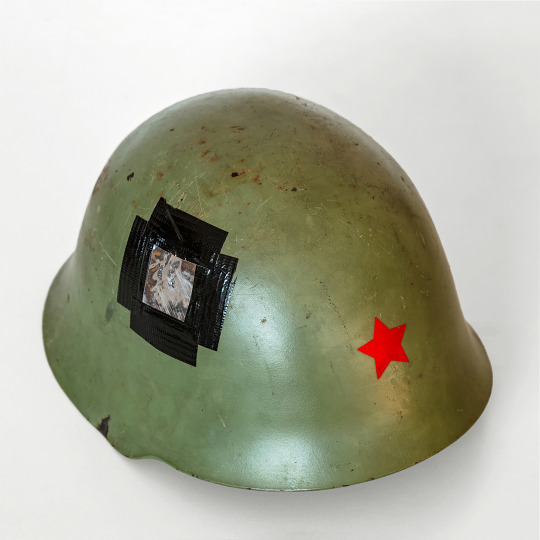
Witness Objects - Luke Watson
Witness Objects is one of seven case studies carried out using various methodologies, to begin to engage with a complex set of narratives, interpretations and perspectives in a place defined by conflict.
Depicted are a series of modified objects which have played some role in conflicts ranging from WWI to the Siege of Sarajevo - part of the extensive collection at the History Museum of Bosnia and Herzegovina.
The objects were witnesses to a timeframe of events associated with war, designed to perform, protect or survive violent acts. They are symbol, artefact, evidence and memory.
Their temporary modification into pinhole cameras has given them an unexpected new function, transitioning them from a passive object into a potentially active tool. The object has the ability to record, survey and witness. Scenes depicted have tentative yet symbolic connections to the object/camera.
The work references the repetitive and cyclical nature of conflict, the blurring of fact and fiction and the untold stories that go undocumented.
www.lukewatsonphotography.com
@lwatsonphoto
0 notes
Photo

Mailbox 44 - Kristina Sergeeva
In Russia, the phenomenon of secret closed towns has been present since the mid 1940s, throughout the Cold War period and the nuclear age, prompted by the two world wars.
The regime of secrecy was created in order to house a military industrial complex within the walls of each of these secret towns. Secret towns were positioned in various geographic locations and were non-existent on Soviet maps. Secured by a concrete wall, in the past, these closed towns might have resonated a feeling of privilege, safety and comfort. They provided all the luxuries people could ever dream of: a theatre, schools, sports complex, ski slopes and more importantly, food and accommodation.
A permit (propusk) was required to access each town, restricting entry for the general public. They were seen as utopias which people dreamed of living in, but never knew existed.
My grandparents were recruited to be a part of one such community, arriving from Nizhny Tagil, Russia in 1975 with their two children with the hope of a better life. Through my photographs of their town, I explore the notion of Soviet closedness through documenting family members and locals who still live within this enclosed environment.
Mailbox 44 questions how this particular environment has shaped and impacted the mentality of its residents from its past until this day.
www.kristinasergeeva.com
@kristinasergeeva__
0 notes
Photo

Exporting is Great? - James Pritchett
The UK Government rarely fails to assert its perception of leadership in the global fight against climate breakdown, yet between 2010 and 2017 it provided fossil fuel companies with £4.8 billion in support.
By providing guarantees and insurance, and occasionally direct loans, UK Export Finance exists to aid the UK economy, by facilitating export deals between UK manufacturers and services, and foreign businesses. UKEF deals have covered a range of sectors, from aerospace technology, to weapons systems. From a £1.52 billion line
of credit with Saudi Aramco, to a £637 million deal with Brazilian oil giant Petrobras, UKEF has involved itself with a prestigious list of CO2 producing companies.
Exporting is Great investigates the dichotomy between UK Government commitments and policy, and their contradictory actions through the UK Export Finance department. Using a number of visual strategies, I highlight the ways in which UKEF’s financing of the fossil fuel industry blatantly contradicts international objectives, and is in direct opposition to governmental claims.
www.jamespritchett.com
@jpritchettphoto
0 notes
Photo
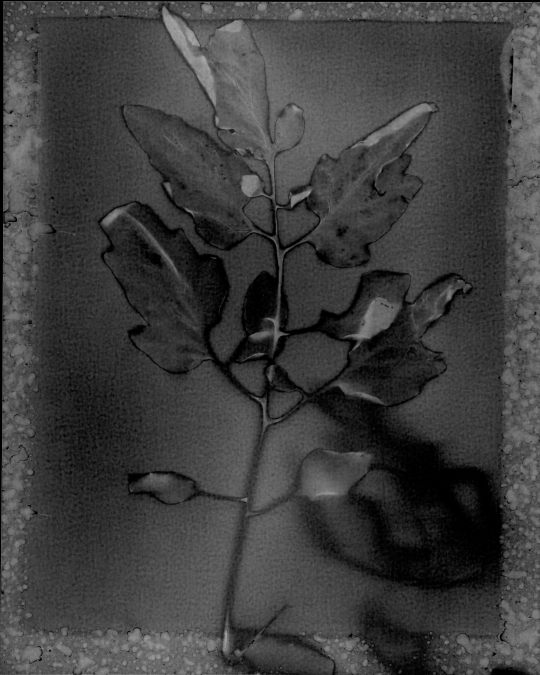
Nightshade - Italian Recipes Harriet Zawedde Fairbairn
‘Nightshade - Italian Recipes’ explores Italian cultural identity at a time when the far right in Italy is in ascendance. It is common for nationalists to use myths or co-opt symbols to define their nation’s image.
Food is one of the great unifiers and dividers of communities. Gastronationalism, a form of nationalism which manifests itself through food, has been expressed in Italy through Mussolini’s futurism, related to the consumption and production of bread and pasta. More recently this has appeared in places such as the Tuscan town of Lucca, where the mayor banned foreign food restaurants within the town’s medieval walls.
I focus on food as a symbol of Italian cultural identity, with specific reference to the tomato.The tomato is a fruit native to the Americas, which is part of the Nightshade family of plants. The forgotten history of the tomato is used to explore how cultural identities are formed, while acting as an analogy for the human experience of migration, intolerance, acceptance and eventually, reverence.
Spanning portraiture, botanical imagery and microscopy, the work questions ways of seeing, emphasising the limitations of labelling and categorisation. The recipes provided in the book are both an offering to the viewer and an invitation to consider a different take on the idea of ‘we are what we eat’.
www.harrietfairbairn.com
@harrietoflondon
0 notes
Photo
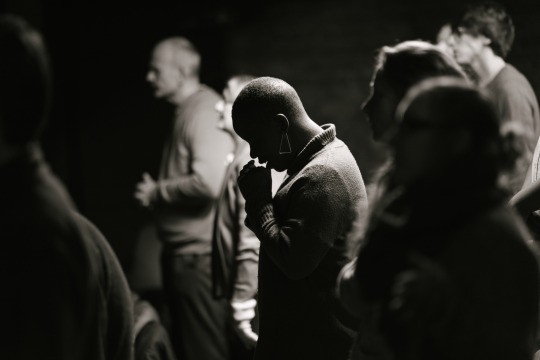
My Church - Hannah Beatrice
What does urban Christianity look like in the 21st century? While many older established churches across the UK are struggling for numbers, communities of faith are growing in surprising places, outside the confines of the conventional Sunday service.
This project documents some of these unusual worship settings across Manchester and Salford, including a hipster coffee shop, council estate, supported accommodation, comedy club, the gay scene, Muslim-background believers and homeless outreach. These groups have been photographed in activity, enacting their faith in everyday, undramatic scenes.
The resulting body of images demonstrate the diversity and vibrancy I see within contemporary Christianity and challenge the view that it is dying.
www.hannahbeatrice.co.uk
@hannahbeatrice.photo
0 notes